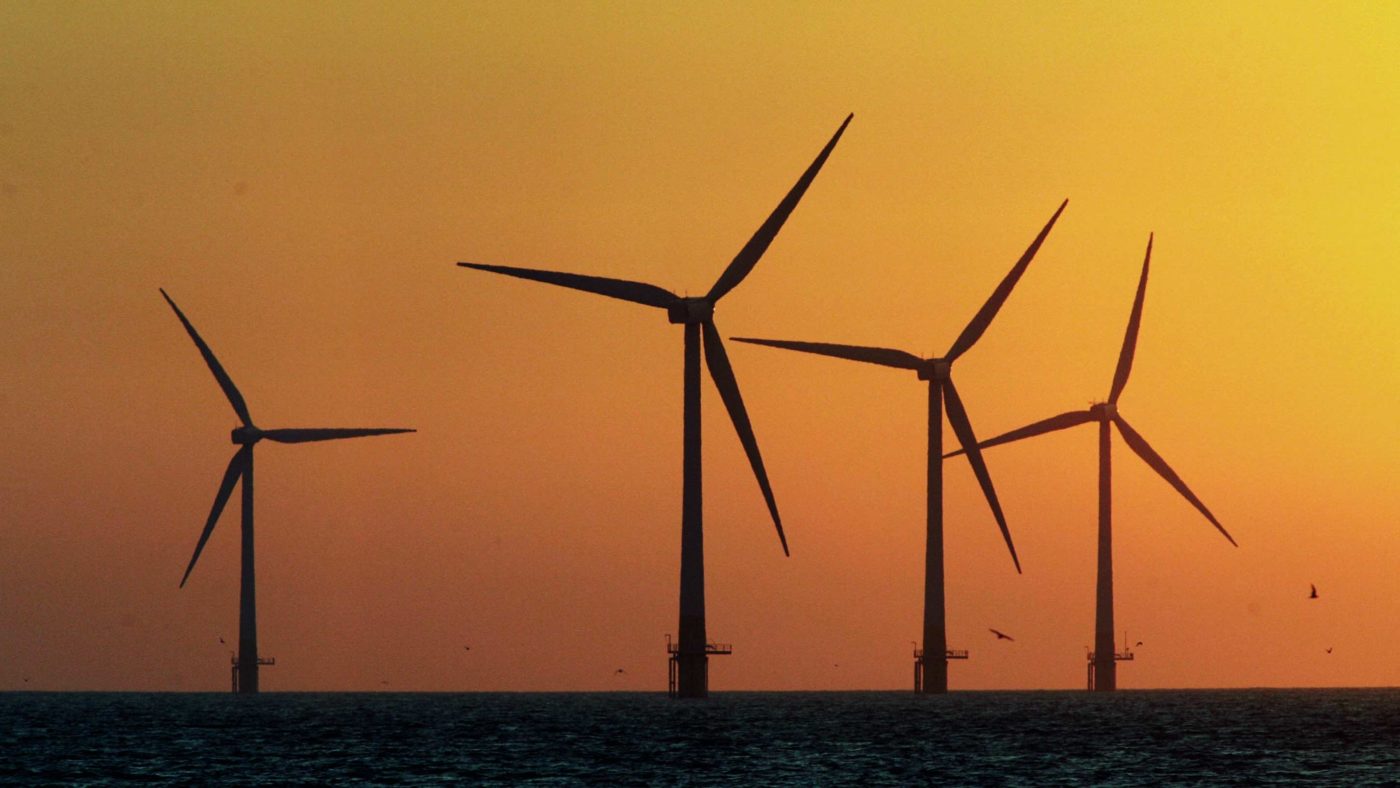“What we’re saying to the politicians, regulators and customers is: let’s keep going – this [wind power] has been a huge success,” Scottish Power’s Keith Anderson gushed yesterday. It certainly has been for Mr Anderson and Scottish Power’s Spanish parent Iberdrola SA. You’ll be hard pressed to find more expensive electricity today than that being produced by Mr Anderson’s wind farms.
Last year, the average selling price that the Big Six energy companies got for electricity from their gas and coal-fired power stations was £45.49 per MWh. By contrast, the average price of electricity from Scottish Power’s wind farms was £117.14 – more than two and half times more – enabling Scottish Power to make a stonking £42.35 profit per MWh, almost as much as the selling price of conventional electricity. Small wonder Mr Anderson wants more wind.
Is wind-generated electricity so much better than conventional to justify such a huge price premium? As Matt Ridley and John Constable brilliantly explain in The Scottish Wind-Power Racket, Scottish wind power is like the sausage factory that only makes sausages when it wants to, and has to be compensated when it makes sausages you don’t want or the roads are too congested for the sausages to make it to your front door.
The bad news doesn’t end there. On top of the 157 per cent mark up on the wholesale price of conventionally generated electricity, you have to pay additional delivery charges for the privilege. National Grid is spending nearly £2 billion on extra grid infrastructure to transport Scottish wind power southwards, enabling National Grid to grow its profits and forcing us to pay even more for high cost renewable energy.
All this is important to bear in mind as we risk being swamped with renewable energy propaganda claiming that we’re on the verge of a wind bonanza. Indeed, one normally level-headed commentator talked of Britain swapping places with Saudi Arabia to become the energy sheikhdom of the northern seas, claiming that the economic argument over wind power had been settled. It hasn’t.
The offshore wind excitement – Keith Anderson is an onshore man – was triggered by the results of the second round of offshore wind contracts. These showed bid prices of between £57.50 and £74.75 per MWh compared to £114-150 per MWh for the projects in the previous round, hence the outpouring of joy at the apparent fall in costs.
Only the story is a little more complicated. According to a timely study by Gordon Hughes, Capell Aris and John Constable, there has been a real, but modest rate of technological improvement, which is only to be expected of a mature technology such as wind power. However, this improvement is offset by the trend towards building wind farms in deeper water as the cheaper, shallower sites get built out.
The key point, though, is that the bid numbers aren’t committed and don’t represent actual costs. As the authors explain, offshore wind bidders are in the game to get their hands on expected subsidies of around £300million a year, totalling more than £4 billion over the 15-year contract period.
But even more attractive than the expected subsidy stream, is the way the deals have been structured. They are one-sided deals, where there is almost no walk-away penalty for non-delivery by the contractor but where the Government has put the customer on the hook for 15 years.
The prospect of a huge upside and a negligible downside is a formula for encouraging what is politely called “strategic bidding”, where bidders sprinkle their bids with fairy dust in the knowledge that they won’t suffer the consequences when their bid numbers turn out to have been too optimistic.
A similar dynamic was at work in bidding for rail franchises. Because of the asymmetric upside and downside risk profile, the process meant that the Government ends up choosing the most risky bid. In 2012, this led to the collapse of the West Coast franchise award, when the Department for Transport had to rescind its decision to award the franchise to First Group in the face of an action in the High Court by Virgin, who demonstrated how First Group’s numbers didn’t stack up.
The West Coast fiasco should have led the Government to have binned a system where irresponsible bidding is rewarded. Instead, it commissioned a report from a former managing director of a rival train operator who argued that the government should embrace the prospect of failure. “Government should tolerate the idea that a franchise may default,” the Brown Report says. “For franchising to function effectively and for the market to function competitively, Government should accept that there can be failure.” This is a bad approach to running a railway, as it systematically favours the lowest quality, highest risk bidder.
In energy, this is even more irresponsible as it means gambling with the future security of Britain’s energy supply. Only a weak government would have gone ahead with the disastrous Hinkley nuclear deal. It sent a signal around the world that the British government preferred a bad deal to no deal. In these circumstances, it would be hardly surprising that offshore wind developers are queueing up to low-ball bids.
Having won control of vast acreages of the sea, like players on a Monopoly board, wind farm developers can be fairly sure that if construction costs start turning out to be higher than assumed in their bid numbers, the Government will have nowhere else to go. Having bid Old Kent Road and Whitechapel prices, they’ll tell the Government that if it wants to ensure that Britain has enough generating capacity, consumers will have to end up paying Park Lane and Mayfair prices.
There is a silver lining. Offshore wind will make Scottish Power’s windfarms – strung out along the wind energy equivalent of Oxford Street – look positively low cost. One thing is certain, the winner of the game isn’t going to be the consumer.


